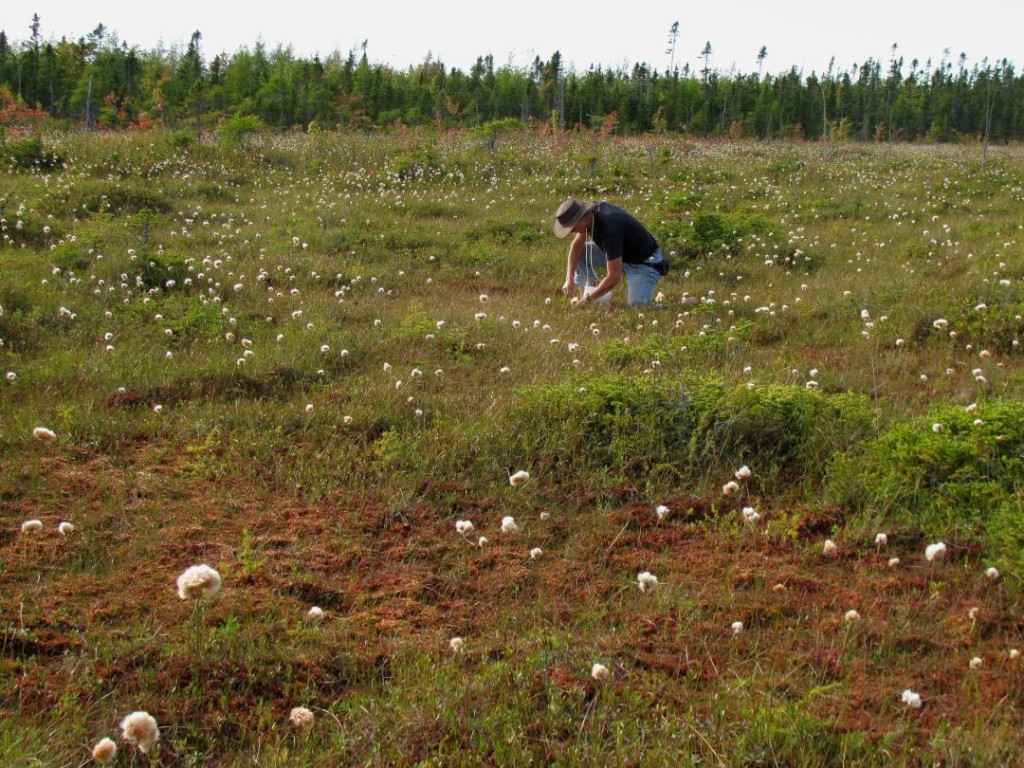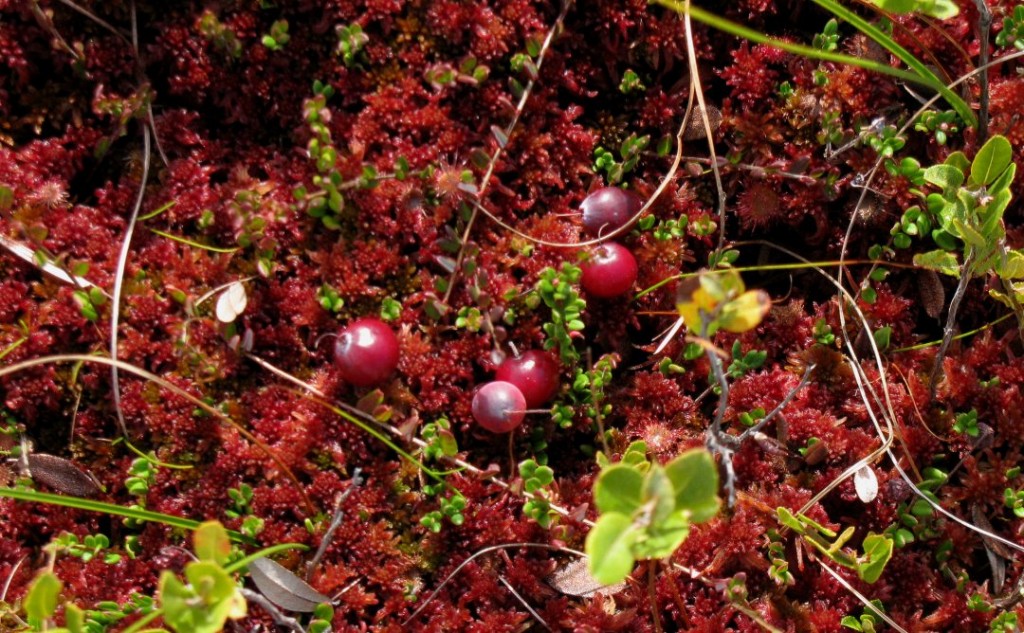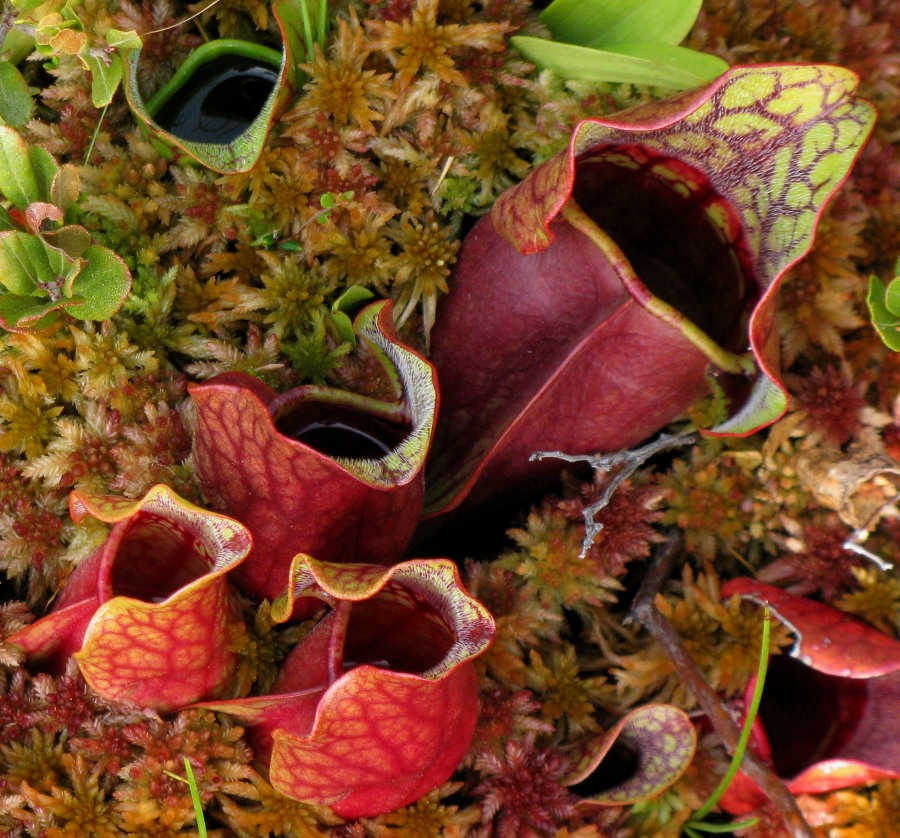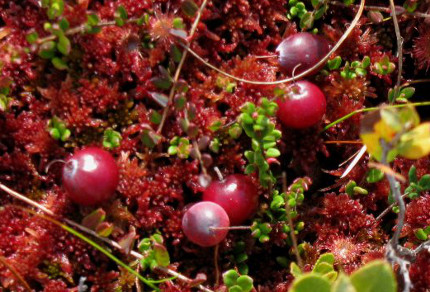
Vilis picking wild cranberries in a Nova Scotia bog (© Magi Nams)
This morning, I walked our long access road with Pepper, limping slightly due to a severely stubbed toe that prevents me from running. The air was still and mild in the wake of a rainstorm that melted our Christmas snow before 2012 saw its first light. That rain lingered through yesterday morning and early afternoon, a south wind driving the temperature up to a balmy 11°C by mid-afternoon (balmy for northern Nova Scotia, that is). The grass of our revealed lawn was as green as in September.
In September, we had no inkling of the long Indian summer that would linger here throughout much of October and November. Anticipating the onset of frozen ground and vegetables and fruits, I harvested the bounties of my gardens and mini-orchards. However, Vilis and I also sought the bounty of nature, gathering wild cranberries from a bog near the shore of the Northumberland Strait one sunny afternoon in late September.

Cranberry Bog Vegetation (© Magi Nams)
The bog was the largest I’ve seen in northern Nova Scotia and featured a classic association of plants adapted to living in an acid soil/water environment. Pink and green sphagnum mosses saturated with bog water formed a thick, spongy carpet. Cottongrasses waved white tufts of seeds. Stunted black spruce and tamarack saplings clung to the slightly higher ground of mossy hummocks, as did heath plants such as huckleberry and Labrador tea.

Cranberries in Nova Scotia bog (© Magi Nams)
The cranberries we sought were initially difficult to spot against the backdrop of pink sphagnum mosses. The plants’ thin, trailing stems and tiny, evergreen leaves offered little help, since they were frequently imbedded in the mosses. However, Vilis and I quickly developed more refined search images and gathered enough of the fruits of both Vaccinium oxycoccus (small cranberry) and Vaccinium macrocarpon (large cranberry) to provide us with cranberry sauce for a half-dozen roast chicken suppers.

Pitcher Plants, Sarracenia purpurea (© Magi Nams)
The nutrient-poor bog also featured an abundance of two kinds of insectivorous plants, pitcher-plants and sundews. The pitcher-plants protruded up through the sphagnum moss, their urn-shaped, fused leaf bases brightly pigmented with shades of green, yellow, red, or purple and filled with water. Insects unfortunate enough to fly into the watery reservoir formed by the leaves or crawl onto the insides of the leaves would find their escape hindered by stiff, downward-pointing hairs (visible on the leaves in the photo). Trapped insects unable to escape the pitcher eventually end up drowning in the reservoir, where the pitcher plant’s digestive enzymes extract nitrogen and other necessary nutrients from the dead insects.

Round-leaved Sundew, Drosera rotundifolia (© Magi Nams)
Far smaller and spectacularly beautiful were the second kind of insectivorous plant we encountered, the sundews. With glistening balls of sweet-scented, sticky secretion held aloft on red glandular hairs that act as insect traps, the round-leaved sundews (Drosera rotundifolia) splayed their leaves wide at the moss surface. In the sunlight, they resembled pincushions impaled with diamond-topped pins.
Any insects that touch the shining attractant of a sundew, which resembles drops of dew lit by the sun (hence the name ‘sundew’), would get stuck to the leaf. That’s an effective trap as it is. However, sundew leaves can also adjust their shape to bring more hairs and sticky attractant into contact with the plant’s prey.1 After captured insects die due to exhaustion or clogging of their breathing holes by the sticky attractant,1 the sundew secretes digestive enzymes into insects’ bodies to retrieve useful nutrients. As I write this, it occurs to me that sundews are the spiders of the plant world. If you want to see them, find a bog. In the autumn, you may also find some plump, red cranberries.
Reference:
1. Wikipedia. Sundew. Updated 28-Dec-2011. Accessed 3-Jan-2012 http://en.wikipedia.org/wiki/Drosera


